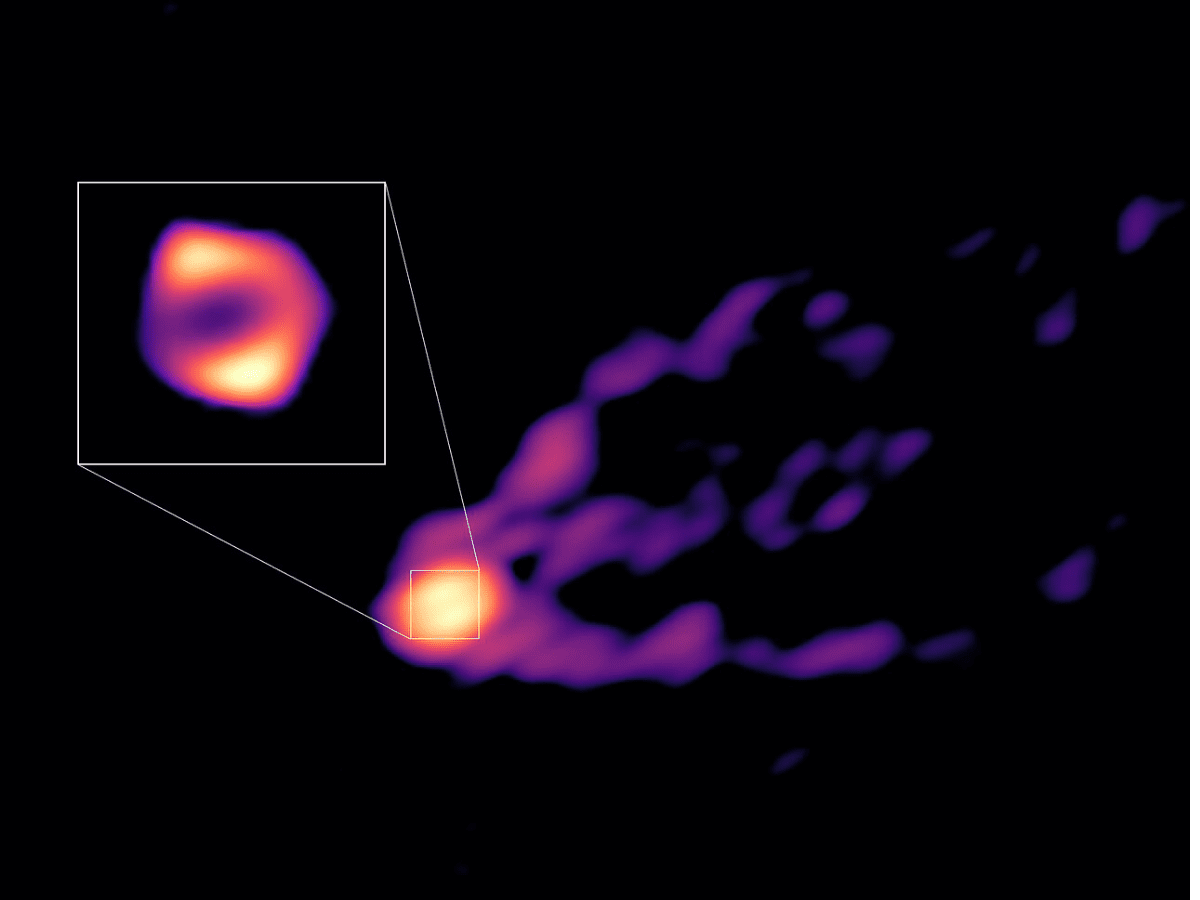
Beijing: For the first time, astronomers have detected an image of a powerful jet exploding from a black hole.
The observations of the black hole at the centre of the galaxy Messier 87 (M87) could help reveal how black holes can launch such energetic jets — among the brightest objects in the universe.
“We know that jets are ejected from the region surrounding black holes, but we still do not fully understand how this actually happens,” said Ru-Sen Lu from the Shanghai Astronomical Observatory in China.
“To study this directly we need to observe the origin of the jet as close as possible to the black hole,” Lu said.
Most galaxies harbour a supermassive black hole at their centre. While black holes are known for engulfing matter in their immediate vicinity, they can also launch powerful jets of matter that extend beyond the galaxies that they live in. Understanding how black holes create such enormous jets has been a long standing problem in astronomy.
The new image published in the journal Nature shows precisely for the first time: how the base of a jet connects with the matter swirling around a supermassive black hole.
The target is the galaxy M87, located 55 million light-years away, and home to a black hole 6.5 billion times more massive than the Sun.
Previous observations had managed to separately image the region close to the black hole and the jet, but this is the first time both features have been observed together.
“This new image completes the picture by showing the region around the black hole and the jet at the same time,” said Jae-Young Kim from the Kyungpook National University in South Korea and the Max Planck Institute for Radio Astronomy in Germany.
The image was obtained in 2018 with the Global Millimetre VLBI Array (GMVA), the Atacama Large Millimetre/submillimetre Array (ALMA), and the Greenland Telescope (GLT), forming a network of radio-telescopes around the globe working together as a virtual Earth-sized telescope.
